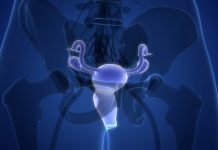Women with early stage breast cancer today are 66% less likely to die within five years of diagnosis than they were in the 1990s, research on the breast cancer survival rate finds
Every year, over 2 million patients receive a diagnosis of invasive breast cancer. For most, it is their first cancer.
Previous studies have shown that the breast cancer survival rate has improved, as the risk of death after being diagnosed with invasive breast cancer has decreased over the past few decades.
Now, researchers at Oxford Population Health have confirmed that women who are diagnosed with early-stage breast cancer today are 66% less likely to die from the disease within five years of diagnosis than they were 20 years ago.
The extent of the decreased risk is a positive step toward cancer research, which health experts aim to analyse further to continue to decrease the risk for patients.
They will now use this breast cancer survival rate study to analyse specific risks for patients with certain cancer characteristics, for example:
- Age
- Whether the cancer was detected by screening
- Involvement of lymph nodes
- Tumour size and grade
The study focused on women who were initially treated with surgery
Taking routine data from the National Cancer Registration and Analysis Service on 512,447 women who were diagnosed with early breast cancer in England between January 1993 and December 2015, the women, who were initially treated with surgery, in this study were followed until December 2020.
This study did not include women who received treatment to reduce the size of their cancer before they had surgery, women whose cancer had already spread, or women diagnosed with more than one cancer.
The breast cancer survival rate research was backed by two patient representatives who are long-term survivors of breast cancer, who found that the risk of death due to breast cancer for all women included was highest during the five years after diagnosis and then declined.

Improvements in prognosis applied to nearly all groups of women
For women diagnosed with early invasive breast cancer during the 1990s, the risk of death within five years of diagnosis was 14% on average. For women diagnosed during 2010-15, it was at 5% on average.
However, the cumulative five year breast cancer survival rate varied substantially between women with different characteristics, as there were over 150,000 women with a diagnosis during 2010-15.
Positively, for most women diagnosed with breast cancer today, the five year risk of breast cancer death is likely to be less than 3 in 100 – which is 3%
The 5-year risk of breast cancer death is less 3% today
Study results can help clinicians with breast cancer diagnoses today
Carolyn Taylor, Professor of Oncology at Oxford Population Health and lead author of the study, said: “Our study is good news for the overwhelming majority of women diagnosed with early breast cancer today because their prognosis has improved so much.
“Their risk of dying from their breast cancer in the first five years after diagnosis is now 5% on average.
“Our study can also be used to estimate risk for individual women in the clinic. It shows that prognosis after a diagnosis of early breast cancer varies widely.
“Patients and clinicians can use our results to estimate prognosis moving forward. In the future further research may be able to reduce the risk of dying from breast cancer even more.”
The study was jointly funded by Cancer Research UK, the NIHR Oxford Biomedical Research Centre, and the University of Oxford.











